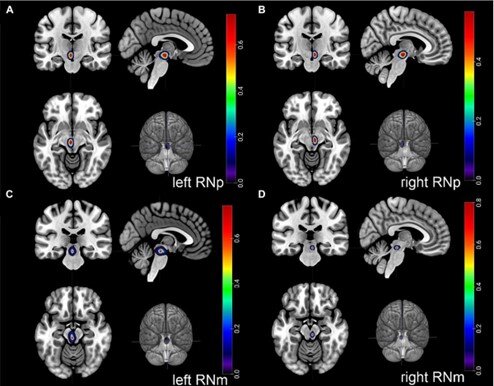In a recent study, a German-American team of scientists has now revealed new insights into the evolutionary development of a brain structure that plays a crucial role in finely tuned and skillful hand movements. The researchers from C.&O. Vogt Institute for Brain Research at HHU Düsseldorf, Forschungszentrum Jülich and Stony Brook University in New York studied a brain structure called the “red nucleus” (lat. Nucleus ruber). This nucleus is an important element of our motor system, especially for dexterous hand movements.
However, many questions about the structural and functional evolution of this nucleus remain enigmatic. The brain researchers created cytoarchitectonic probabilistic maps of this nucleus that capture the variations in structure between brains. Furthermore, using brain sections from the large brain collection in Düsseldorf, the authors could perform a phylogenetic analysis uncovering the evolutionary development of this structure in primates. They could show that two different subdivisions of the red nucleus underwent distinct evolutionary trajectories. While the phylogenetically older part has become smaller in humans and apes, the second part has actually grown in proportion to brain size in all primates, including humans. This is why the red nucleus in humans and great apes, in contrast to other primates, consists of a large second part and a vestigial other part.
These important insights into the structural evolution of the red nucleus spark new hypotheses about its functional specialization, e. g. whether these changes may play a positive role in neurodegenerative diseases. The new maps of the red nucleus can be utilized for future research that will further advance our understanding of the role of this structure in motor and cognitive function.
